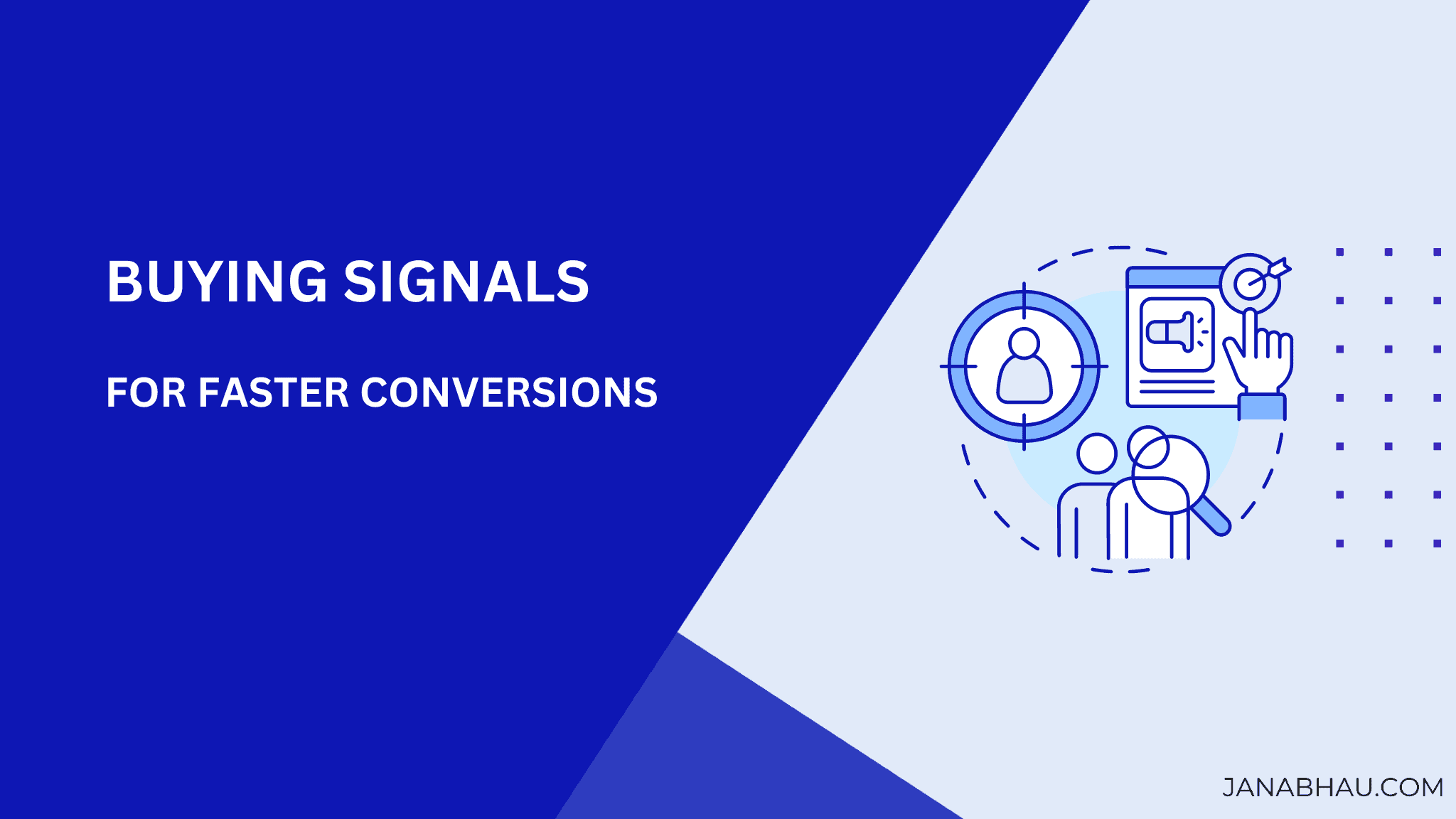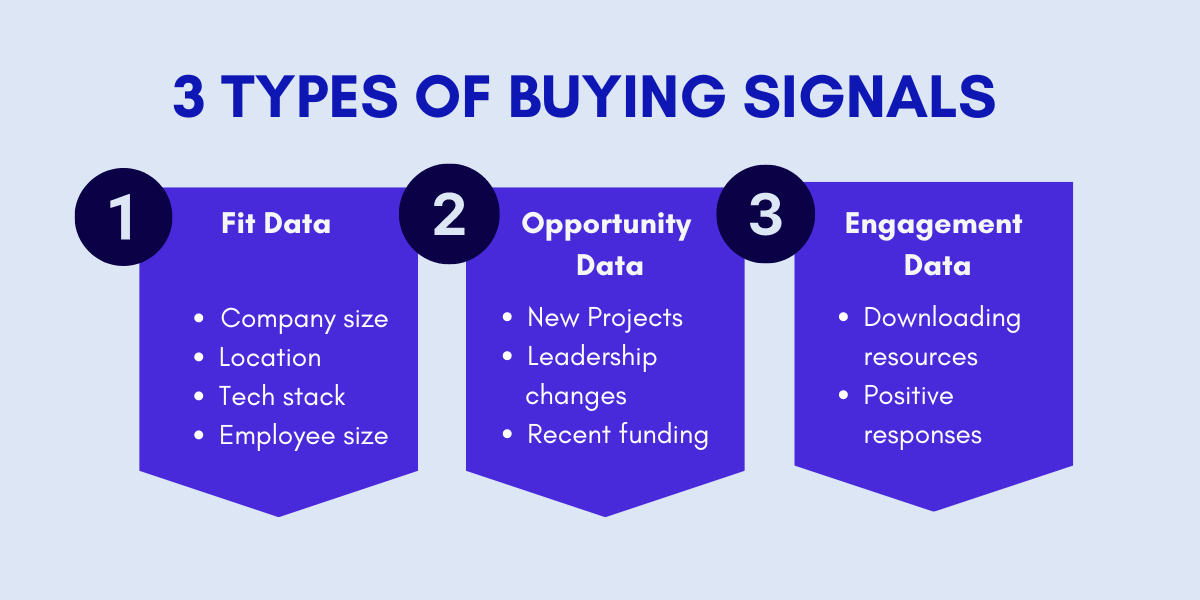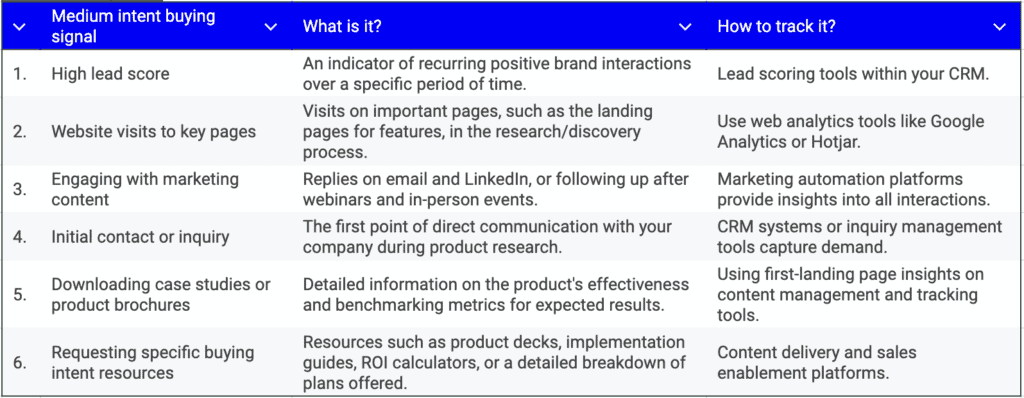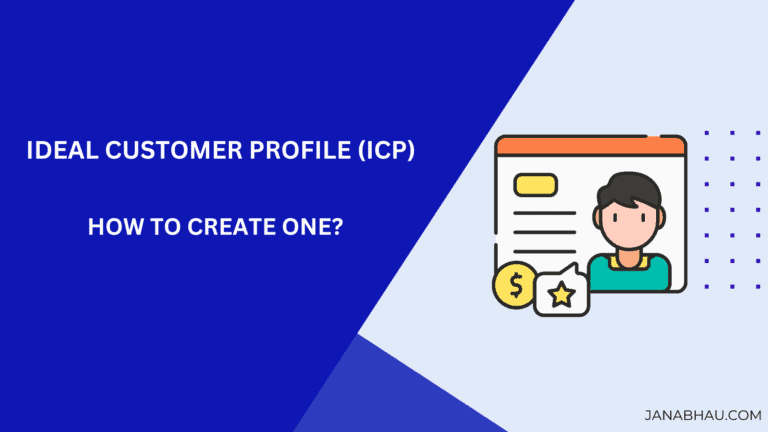15 Buying Signals For Faster Sales Conversions

What’s a superpower that most salespeople wish for? The ability to read minds, and know what their customers are thinking.
While we aren’t all psychics, there are a few buying signals that help salespeople navigate sales conversations and direct customers toward making a purchase.
When I started in sales, I had a hard time figuring out if a prospect really wanted to buy the software I was selling or if they were just looking and would end up staying with what they already had.
I felt clueless and missed sales opportunities. However, over time, after many client interactions, I noticed certain patterns and signals indicating an actual buying intent.
By recognizing and interpreting these signals, I achieved much more success and won valuable deals in a much shorter time.
In this blog post, I’ll share the 15 most important buying signals that accelerated sales conversions for my team.
Key Takeaways
- Buying signals indicate potential customers’ purchase interest and can be verbal, non-verbal, or behavioral.
- Distinguishing between strong buying signals (like RFPs) and casual interest (like social media follows) helps prioritize sales efforts.
- Tools like intent data providers, CRM, marketing analytics platforms, and lead scoring can help you effectively track and leverage buying signals.
What is a buying signal?
A buying signal is an action or behavior from potential customers indicating purchase interest. These customer buying signals are invaluable for sales and marketing teams, helping them align their efforts at different stages of the buying journey.
You can identify sales buying signals while interacting with your customers—in person and via various online activities. For example, a prospect asking detailed questions about your product, such as its pricing, strongly indicates purchasing intent.
These signals can be verbal, like expressing frustration with current suppliers, or non-verbal, for example engaging with digital content. Recognizing sales and marketing buying signals provides a roadmap to the customer’s decision-making process.
Once you notice them, you can take the relevant steps to handle objections at that stage to speed up the sales cycle. It’s about noticing the subtle hints a potential buyer provides throughout their journey.
What is not an example of a buying signal?
While looking out for buying signals, sometimes businesses misinterpret their customer’s intent. Not every positive interaction is a buying signal!
If you treat a prospect’s interest in your product/service as a buying signal, it’ll offset your sales forecasts and put additional pressure on your sales rep with unrealistic sales targets. At the same time, sharing sales-oriented communication might come across as pushy and drive top-of-the-funnel leads away from your business.
Here are a few examples of prospects expressing their interest, without it being a buying signal:
- Accepting a LinkedIn connection request or engaging with social media posts, like comments or retweets
- Downloading white papers, e-books, or any other informational resource
- Attending webinars or in-person events
It’s important to note that while these interactions are relevant, your prospects could still be in the awareness or discovery phase of their buying journey. These actions show a willingness to connect or engage in conversation but do not reflect an immediate intent to purchase.
Conversely, buying signals are expressed by hot leads. They demonstrate a genuine purchasing intent where decision-makers understand your solution and evaluate potential purchases closely.
A few clear and action-oriented examples of buying signals are:
- Downloading a software comparison checklist
- Free trial sign-ups
- Attending a group demo or product walkthrough
- Requesting a quote or pricing information
- Engaging in one-on-one consultations
Now that we know what buying signals really are, let’s get on to identifying them and the best strategies to leverage to leverage them in the buying process.
3 Types of buying signals

There are a lot of different types of buying signals that can be verbal, non-verbal, and behavioral. Verbal signals include asking detailed or tough questions, indicating a strong intent to buy.
Non-verbal cues might include positive body language or engagement with marketing materials. In B2B contexts, these signals may be less obvious, so recognizing even subtle hints is crucial.
In instances where your sales cycle is mostly online, guided by potential leads responding positively to your digital touchpoints, this layered approach helps craft a more targeted and effective sales strategy. The three types of buying signals to look out for are:
- Fit data
- Opportunity data
- Engagement data
1. Fit Data
Fit data includes demographic and firmographic information to assess whether a prospect aligns with the ideal customer profile (ICP). They help your sales reps identify prospects matching your ICP who are more likely to purchase your product or service. Examples of fit data include:
- Company size and industry
- Geographic location
- Existing technology stack
- Employee headcount
Fit data isn’t an actual buying signal, it’s like placing the best bet, but it still needs to be used with other intent data to improve sales strategy accuracy. Combining these data sets ensures your efforts are directed towards prospects with the highest chances of sales conversions.
2. Opportunity data
Opportunity data involves external factors that could influence buyer intent, like company events and leadership changes. Most common buying signals directed by opportunity data are:
- Businesses initiating new projects
- Leadership changes in the organization
- A recent successful funding round that indicates potential business opportunities
These signs give sales reps a good entry-point to pitch your solution in alignment with their organizational growth. The external cues can even aid upsell and cross-sell opportunities with existing customers.
3. Engagement data
Unlike the previous two types of buyer signals, engagement data engagement data is more direct and a clear indicator of buying intent.
It refers to potential buyers’ interactions and behaviors, indicating their interest level and purchase intent. For example, a prospect’s timely responses to emails or calls signal high purchase interest.
Other examples of engagement data that indicates strong buying intent are:
- Engaging with software buying guides and comparison documents
- Positive responses to follow-up emails and calls
- Attending demonstration sessions
- Frequently visiting pricing pages
At in-person meetings, nonverbal buying signals like body language during meetings or your prospect’s excitement/engagement level can also provide insights into a prospect’s buying intent.
As a sales rep, your job doesn’t end once you uncover buying signals, you also need effective ways to track and utilize them in the selling process. The next section covers the 15 buying signals that my team focused on to generate more sales.
15 Buying Signals that you need to track and leverage
These key buying signals are categorized into high, medium, and low intent to help you prioritize engagement strategies effectively. I have also included the tools that we used to track these buying signals.
High Intent Buying Signals
High-intent buying signals are the most direct indicators of purchase intent. These signals typically occur in the later stages of the buyer’s journey and suggest that the prospect is ready to move forward with a purchase decision. I use the following high-intent buying signals to identify potential customers:

Tracking these signals allows businesses to engage with prospects at the right time, increasing the chances of closing the deal.
Medium Intent Buying Signals
Medium intent buying signals indicate growing interest but not a definite commitment to purchase. These signals help businesses identify prospects in the consideration phase of their buying journey.

Along with tracking buying signals at this stage, it is also important to set up a personalized demo or a follow-up cadence for further communication.
Low Intent Buying Signals
Low intent buying signals are preliminary, indicating casual interest rather than definite intent to purchase. While these signals are less direct, they still provide valuable insights into potential future interactions and should be monitored to nurture leads over time.

With low-intent buying signals, you might need completely different strategies to move leads down the sales funnel. This may include sharing valuable content, understanding customer preferences, or setting up a discovery call.
Digital interactions are complicated because they are spread across so many channels. It is absolutely impossible for a sales rep to monitor interactions and check on each lead manually.
But, there are many tools that you can incorporate in your sales tech-stack to not miss any strong buying signal.
Tools to Identify Buying Signals in 2024
These tools are used to identify and track buying signals. They offer actionable insights to your sales rep and help them stay one step ahead in the buying process.
1. CRM

A Customer Relationship Management (CRM) system is an end-to-end lead management platform that captures every single interaction a lead has with your sales/marketing teams. It tracks various engagement data [such as clicks, signing up for demos, website and social media interactions, etc.] and records them over time, giving you a holistic view into customer intent.
You can leverage the tool to identify buyer behaviors and potential engagement levels.
Potential tools in the category:
- Salesforce automates contact management and captures key changes, identifying critical buying signals through relationship tracking.
- Pipedrive allows sales teams to track buying signals by documenting all emails, calls, and meetings with prospects in one place.
- HubSpot CRM provides robust tools for tracking buying signal. It offers detailed reports on prospect behavior and engagement patterns.
2. Analytics and Tracking

Analytics tools provide insights into how prospects interact with sales and marketing content, revealing their intent to purchase. Monitoring customer interactions and tracking metrics like frequency of product usage and feature adoption helps sales teams identify potential buying signals.
For example, intent data from web interactions, such as website visits and content downloads, provides valuable insights into prospects’ engagement levels and likelihood to convert.
Potential tools in the category:
- Google Analytics is the most widely used web analytics tool, offering analytics like website traffic, user behavior, and conversion tracking.
- Mixpanel, an advanced product analytics tool, tracks user interactions with web and mobile applications, offering deep insights into user behavior, funnel analysis, and retention metrics.
- Hotjar is a behavior analytics tool that provides heatmaps, session recordings, and user feedback to help businesses understand how users navigate their website.
3. Marketing Engagement Tools

Marketing engagement tools track how prospects interact with your marketing content, such as emails, webinars, and social media posts. These tools help identify which prospects are most engaged and likely to convert.
While not every interaction with a marketing collateral is high intent, you can double down on leads who are downloading implementation guides, software checklists, and any other promotional content.
Best tools in the category:
- Marketo helps businesses nurture leads, manage email campaigns, and track engagement across various channels, making it a powerful tool for identifying buying signals.
- Pardot is Salesforce’s marketing automation solution, which integrates seamlessly with Salesforce CRM, allowing for better lead management, scoring, and engagement tracking.
- ActiveCampaign combines email marketing, automation workflows, and CRM features, making it ideal for small to mid-sized businesses looking to enhance their engagement strategies.
4. Lead Scoring Tools

Lead scoring tools help businesses prioritize potential buyers by evaluating their interactions and assigning numerical values based on criteria like demographics and engagement levels. These tools integrate with CRMs, centralize data and streamline the lead management process.
With AI and machine learning, lead scoring tools enhance accuracy in predicting conversion likelihood and automate the sales qualification process. Most CRMs have a lead scoring feature in them but only a few track customer engagement consistently.
Best tools in the category:
- ActiveCampaign combines CRM, marketing automation, and lead scoring, allowing businesses to prioritize and nurture high-potential leads effectively.
- HubSpot CRM has built-in lead scoring that uses behavioral data and customizable criteria to help sales teams focus on the most qualified leads.
- Pardot offers advanced lead scoring, helping businesses identify and target the most promising prospects based on engagement and fit.
5. Social Listening Tools

Social listening tools monitor social media channels for mentions of your brand, industry-related keywords, and competitor activities, providing insights into what prospects are saying and feeling.
Conversations online can indicate buying intent, such as discussions about problems your product solves or inquiries about your industry. Engaging with prospects at the right moment can help move them closer to a purchase decision.
Best tools in the category:
- Hootsuite includes social listening features, allowing businesses to monitor brand mentions, track competitors, and engage with prospects on social media.
- Brandwatch offers deep insights into online conversations, sentiment analysis, and competitor monitoring.
- Sprout Social is a social media management and analytics tool to track brand mentions, hashtags, and industry trends.
Summary
Understanding and leveraging buying signals is crucial to accelerate sales conversions. By recognizing high, medium, and low intent signals, businesses can prioritize their engagement strategies and focus on prospects who are most likely to convert.
Tools like CRM systems, analytics and tracking tools, lead scoring tools, and social listening tools play an important role in identifying and interpreting buying signals.
Ensure that you don’t miss out on these 15 buying signals for more effective outreach and higher conversion rates. Remember, the key to successful sales is not just about identifying potential customers but engaging with them at the right time and with the right message.
By mastering the art of recognizing buying signals, you can stay ahead of the competition and achieve your sales goals.
Frequently Asked Questions
What is a buying signal?
A buying signal is a clear indication from a potential customer—through words, body language, or actions—that they’re interested in making a purchase. Recognizing these signals can help you close the deal!
Can social media engagement be considered a buying signal?
Absolutely, social media engagement can show potential interest, but it’s not a guaranteed buying signal. It’s always good to look for other explicit actions or indicators that reflect a purchasing decision.
What tools can help identify buying signals?
CRM systems, analytics tools, and lead scoring tools are great for spotting buying signals. They help you track customer behavior and engagement, making it easier to understand when someone is ready to buy.
What are high intent buying signals?
High intent buying signals are clear actions that show a buyer is ready to make a decision, like submitting Requests for Proposal, asking for product demos, or inquiring about budgets. Recognizing these signals can help you convert leads into paying customers faster.
How can lead scoring tools benefit the sales process?
Lead scoring tools can really streamline your sales process by highlighting the most promising prospects based on their interactions. This means your sales team can concentrate their efforts on leads that are more likely to convert, boosting efficiency and success.

![11 Best Data Enrichment Tools Using AI [2024]](https://janabhau.com/wp-content/uploads/2023/11/White-Blue-Professional-Modern-Best-Way-To-Earn-Money-From-Home-Blog-Banner-5-768x432.png)


![Smartlead Review: Swiss Army Knife for Email Deliverability [2024 ]](https://janabhau.com/wp-content/uploads/2023/11/White-Blue-Professional-Modern-Best-Way-To-Earn-Money-From-Home-Blog-Banner-4-768x432.png)

